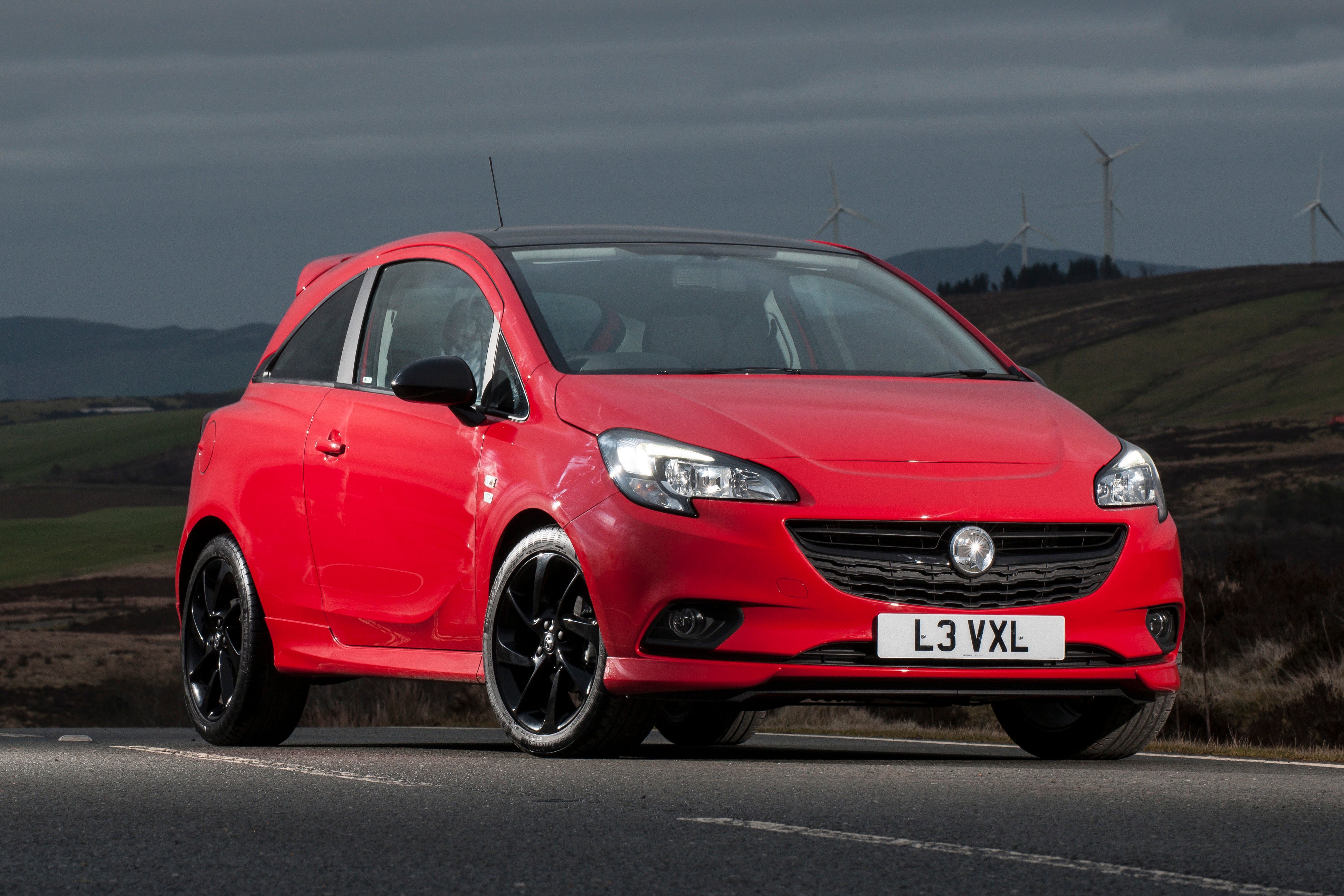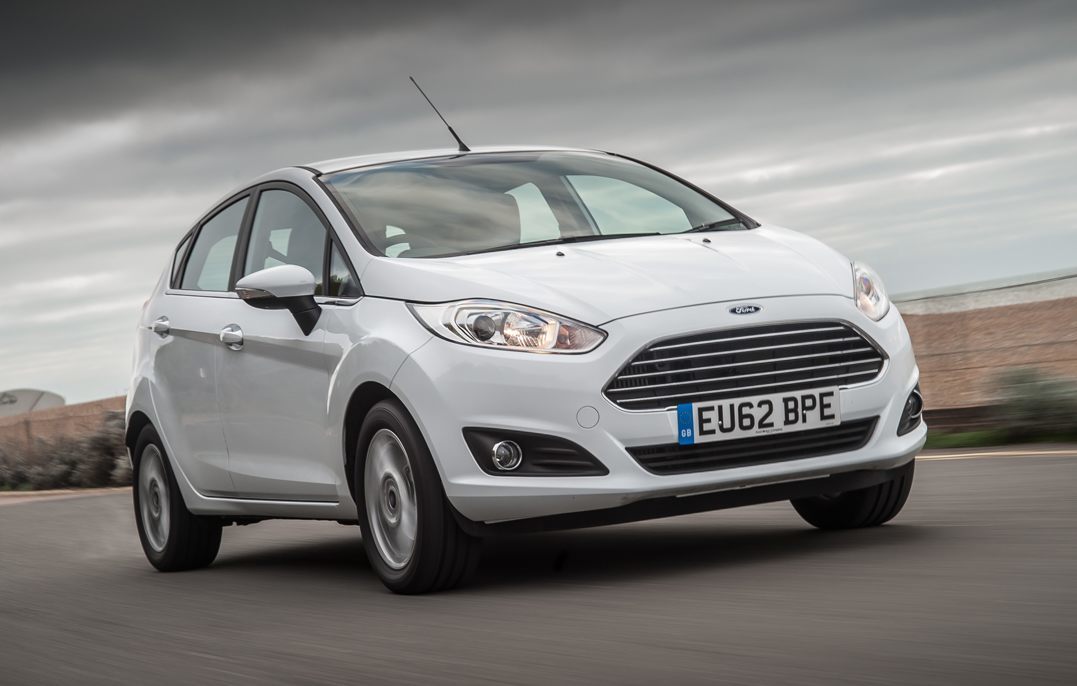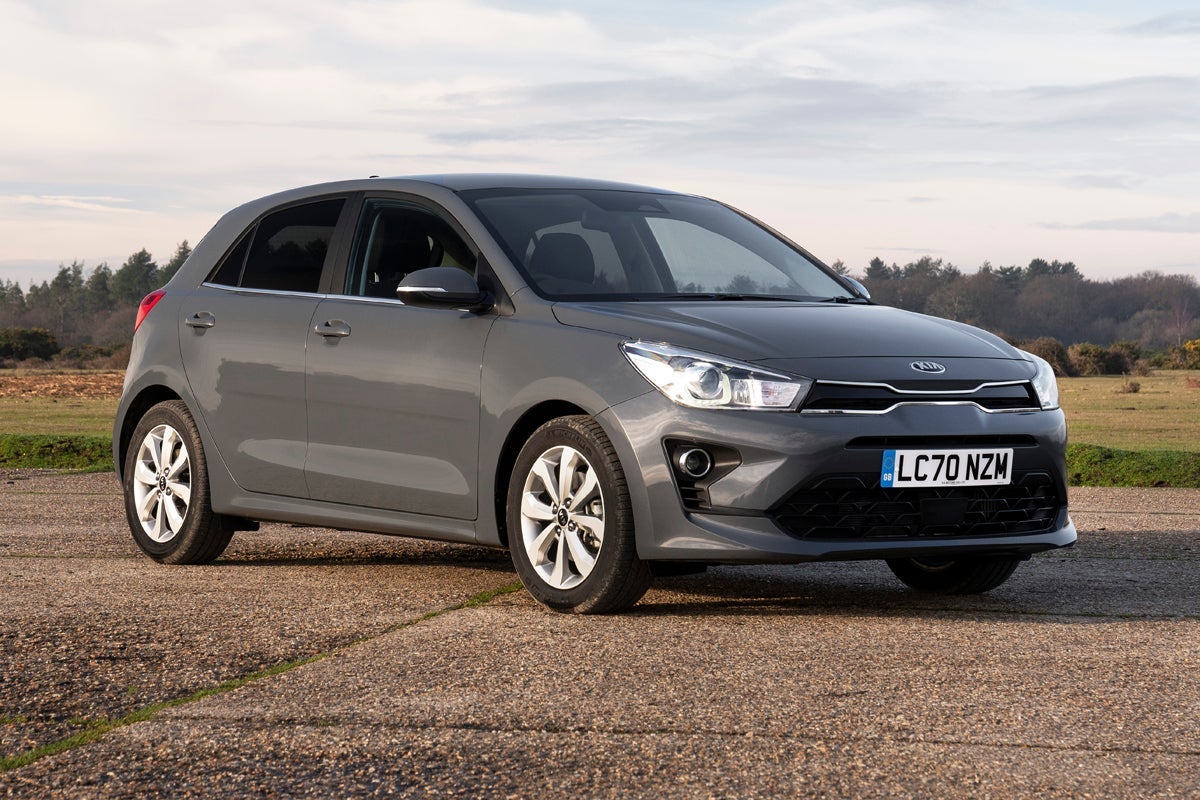Used Hyundai i20 (2015-2020) Review
Written by Andrew Brady
Quick overview
Pros
- Generously equipped in Premium trim
- Responsive 1.0-litre engine
- Spacious interior
Cons
- Gutless entry-level engine
- Not the smartest looking interior
- Forgettable to drive
Overall verdict
"The Hyundai i20 is a straight-laced small hatchback that offers decent value for money, a spacious interior with a sensible layout, and lots of equipment, but not a great deal in the way of visual or driving excitement."
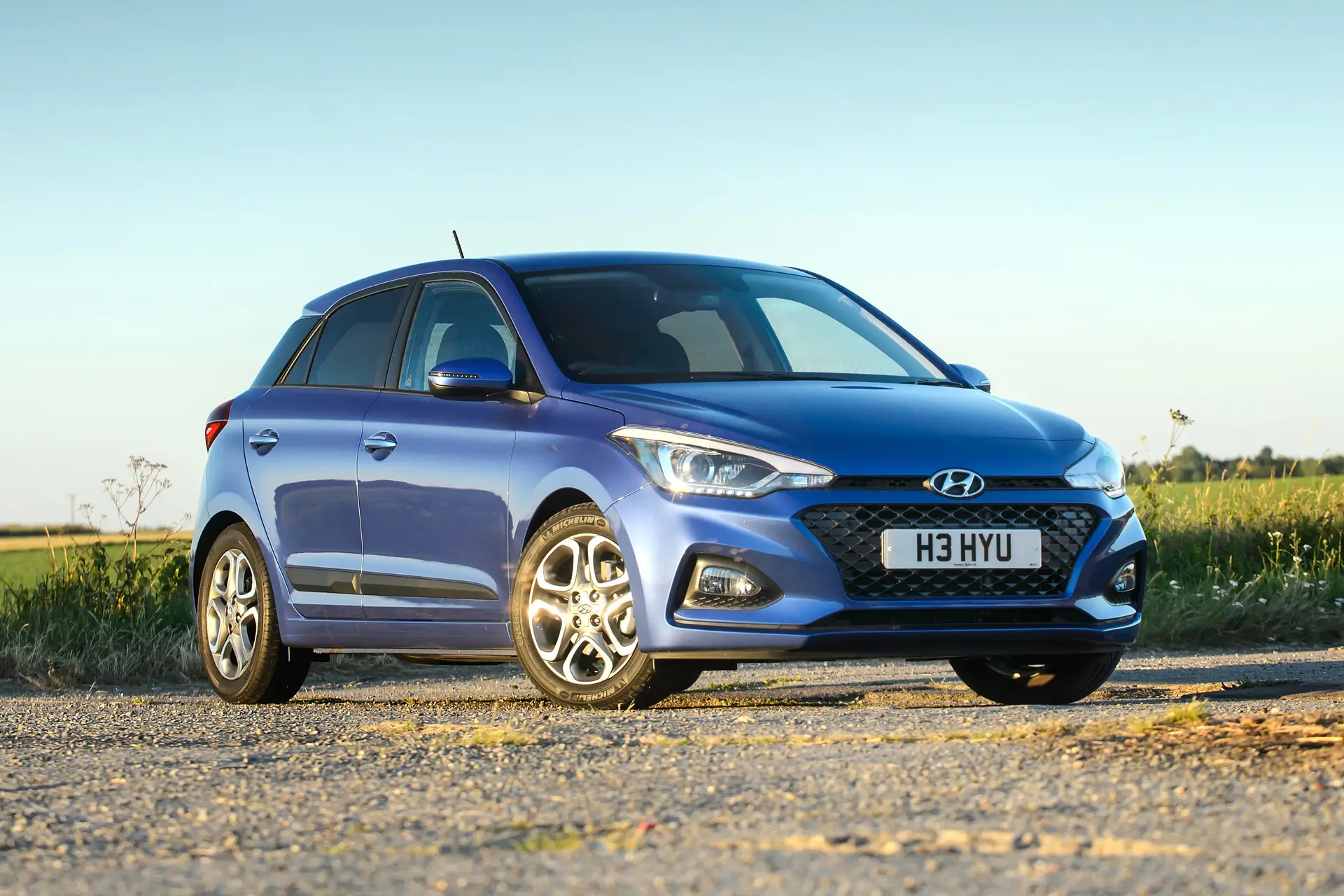
Whether those last two qualities matter to you will have a large say in deciding how you feel about the rest of this car. If you are after something stylish or sporty, then you're fresh out of luck. If not, then please read on.
Until recently, you could have the i20 in three different styles - a three-door hatch (badged the i20 coupe), the most popular five-door hatchback, and a high-riding version with SUV-inspired styling called the i20 Active.
This review focuses mainly on the five-door, since it's the layout that makes up over 90 per cent of cars sold.
This body style really plays to the i20's strengths too. It has a roomy cabin that can seat four adults with ease and even carry five at a push. There are lots of stowage cubbies dotted around, and its boot is a decent size.
It'll be great for young families who need a small car that can carry a lot, but who don't want a bigger estate.
It was introduced in 2015 with a range of engines that included petrol and diesel power, but revised heavily in 2018. Along with a raft of styling and interior changes, both the diesel models were dropped from the line-up.
Currently there are two petrol engines to choose from, each in two different states of tune. The cheapest car gets a four-cylinder 1.2-litre with 75PS. In all other trims, this unit comes with a more useful 84PS. A modern 1.0-litre three-cylinder turbo with either 100PS or 120PS rounds off the range - the former unit is our favourite.
It's a willing performer, with enough pulling power to cope with motorway jaunts and faster roads, but it's not quite as refined or flexible as the best three-cylinders from Ford and Volkswagen. Still, it's the most efficient model in the line-up, and gives buyers the option to specify a seven-speed dual-clutch automatic gearbox.
On the road, the i20 is rather forgettable to drive, but does the job more than adequately. It's composed and competent through bends, with decent grip, stability and body control, but a slightly hard-edged ride in town. A Ford Fiesta is more supple at low speed, but will also put a bigger smile on your face on a windy B-road.
At present there are five trims - S Connect, SE, PLAY, Premium Nav and Premium SE Nav. Since the update, equipment levels are up there with the best in class. All i20s now have a 7.0-inch touchscreen display, which also includes a reversing camera, Apple and Android smartphone mirroring, DAB and Bluetooth as standard.
The most expensive 'Premium' trims are still pretty reasonably priced compared to rivals, offering up big car features like all-round parking sensors, sat-nav, heated seats and steering wheel, and an electric sunroof. It almost makes up for the dreary cabin, which is well built, but lacking even a modicum of flair or imagination.
If your requirements from a car involve ease of use, hassle-free ownership, and value, then the i20 will make a great travel companion. It's a rational purchase, just like IKEA furniture or a washing machine, and that's okay.
If you're looking for the newer version, you need our Hyundai i20 (2020) review.
Is the Hyundai i20 right for you?
Buying any new car can be a stressful experience. The i20 is the perfect choice for people who want to take the anxiety out of their next purchase. It's competent in almost every area, and comes with added peace of mind thanks to its five-year manufacturer warranty from new - which is transferrable to subsequent owners.
No, it's not the most exciting choice, but it's sensible, spacious inside, and very easy to drive. The generous levels of standard equipment (from SE trim on) and its affordable pricing help to balance its bland interior too.
Anyone looking for a small automatic car should put the i20 on their shortlist. Its twin-clutch transmission is one of the smoothest in this class, and has very little impact on everyday running costs, but it's quite pricey.
True, there are few areas where the Hyundai really excels and buyers searching for the most fuel efficient or practical small hatch should look elsewhere. Still, if you value a painless ownership experience, step this way.
What's the best Hyundai i20 model/engine to choose?
Hyundai is no longer a budget brand, but its customers will still demand and expect strong value for money.
For those people, the mid-range i20 SE in five-door spec is the best choice, as it plays to those strengths.
The Active model's rugged off-road makeover is not worth the price premium you'll pay for it, and it handles worse than the standard car. However, the Play Edition trim adds some juicy extra styling and equipment upgrades and undercuts the SE on price. So if you're buying new or nearly new, then that's the one to go for.
When it comes to engines, the 1.0-litre turbo with 100PS strikes the best balance between performance, fuel economy and refinement. The only reason we'd avoid picking this engine is the higher cost of the insurance.
While the dual-clutch automatic is a very smooth transmission, it adds over £1,200 to the purchase price. So we'd stick with the manual unless you simply must have a two-pedal car, or do a lot of driving in heavy traffic.
What other cars are similar to the Hyundai i20?
Small hatches like the Hyundai i20 sell like hot cakes, so it belongs to one of the most fiercely competitive areas of the car market. Established class favourites include the Ford Fiesta, Renault Clio and Volkswagen Polo.
That's just the tip of the iceberg too. Cars like the Kia Rio, Skoda Fabia and Mazda 2 are all snapping at the heels of the bigger names, some offering space or a sharper drive, others focusing on value and equipment.
The i20 falls into the latter category, and it's keenly priced. Still, if you need a roomy car on an even tighter budget, the Dacia Sandero offers a similarly roomy interior and decent boot, for well under the £10,000 mark.
Buyers after something a bit more premium inside can opt for the MINI hatch or Audi A1, but beware that the optional extras on both models can massively ratchet up the price, and neither is especially practical inside.
For something more efficient, if you're a company driver for example, the new Peugeot 208 comes with a choice of fuel-sipping petrol and diesel engines or as a battery-powered EV, with a range of over 200 miles.
Comfort and design
"Getting comfortable behind the wheel of the i20 should take no time at all. There's a wide range of manual adjustment to the seat, including the height, so a couple of tugs on the levers should be all that's required."
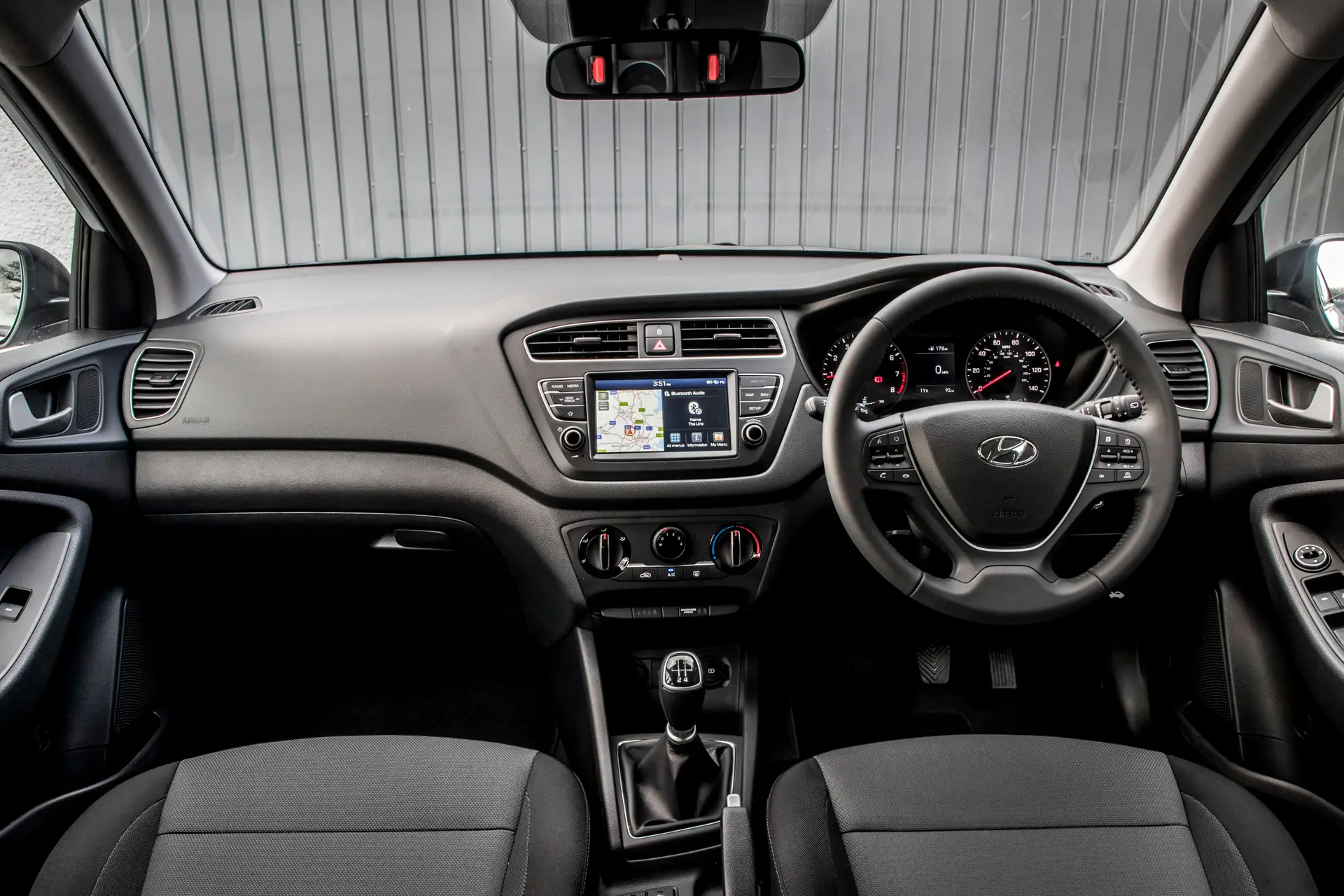
The steering wheel can be moved closer to the driver (as well as up and down) so both taller and shorter individuals should be well catered for. You might notice the pedals don't line up directly below the rim, and are slightly offset to the right, creating space for a foot rest that will be a blessing after a few hours of driving.
Those front seats are very supportive, with decent side bolsters, but there's no option to add lumbar support.
Still, top spec versions have heaters and a central armrest, helping mitigate aches and pains on longer trips.
Hyundai gets top marks for the simplicity of the cabin layout too. It's one of the least eye-catching interiors in any small car, but the clarity of the instruments and logical way the controls have been placed is hard to fault.
The infotainment screen is neatly integrated into the dash (instead of sitting in a flimsy upright dock) but still close enough to reach without needing to stretch. There is no mystery involved in changing the temperature, and while the bonnet release catch is hidden away down by the driver's right knee, it's very clearly labelled.
The instruments are also worthy of praise. On standard cars the text is incredibly clear, and on pricier versions the dot-matrix screen in between them is swapped out for a colourful LCD with even more info.
Quality and finish
Hyundai did all the hard work to make the i20's cabin simple and thoughtfully laid out, but bottled it once it came to the design. Why does this matter? Well, it's a mundane appearance, and the drab cabin materials do genuinely make it harder to appreciate the underlying solidity. It looks like no one cared enough to bother.
Sure, there are some soft, dense plastics covering the top of the dash, but your hands don't need to wander far before encountering harder, scratchier surfaces - especially near the glove box lid, handbrake and doors. There are no creaks or big panel gaps, but a Renault Clio feels plusher, let alone the class-leading Volkswagen Polo.
All but the entry-level S Connect car get a soft leather steering wheel, helping enhance the feeling of quality. The various switches and buttons on the dash are nicely damped, even the indicator stalks are sturdy.
However, the only thing to distract you from the sea of grey plastics is the odd bit of silver trim around the air vents and stereo controls. It's crying out for a change of colour or texture to help lift the mood. Choosing one of the pricier models adds luxuries like climate control and a heated steering wheel, but no smarter materials.
Infotainment
Unsurprisingly, on-board technology was one of the biggest areas of improvement after the mid-life facelift. In every model you'll now find a colourful 7.0-inch touchscreen display, with DAB radio, and Bluetooth included.
The screen is relatively painless to use too. It's flanked on either side by chunky shortcut buttons that help you navigate the various menus, and important functions like the air-con have their own separate controls.
It also gives you the option to control media playback via the steering wheel, another very useful time saver.
The built-in nav on top spec models can be a bit laggy when figuring out the best route or searching for an address, but Apple CarPlay and Android Auto compatibility is standard. This means you can use all your phone apps via the main screen, by far the safest and easiest way to interact with your phone on the move.
Earlier versions of the i20 are less impressive. The most basic models had a terrible sounding two-speaker analogue radio (not even a CD player), and had to make do without Bluetooth or a DAB digital radio. SE trim added these features, but provided a smartphone dock for using your apps on the move, instead of a screen.
Space and practicality
If you need room for a few, the i20 could be the perfect fit. It's really spacious for a small car, and you’ll be surprised just how comfortable it feels in here even with four passengers on board. It’s wider than most of its rivals inside, and that means even broad-shouldered blokes won’t feel squished together in the back seats.
Head and legroom in the rear are very generous, and the flat footwells mean if you carry three in the back, everyone has space to plant their feet, although the narrow middle seat will not be comfortable on long trips.
Our only minor gripe is that the back doors don't open very wide. This hampers access, and makes it harder to fit a bulky child seat, and although the Isofix anchors are exposed, the seat bases also get in the way.
Up front, you'll find some useful spots for chucking loose items, including a wide phone tray in front of the gear stick, two cupholders, door pockets that'll swallow a 1.5-litre bottle of water, and an adequate glovebox.
On the two Premium trims, you also get a central armrest with hidden storage for phone cables and the like.
The boot offers an impressive 326 litres of luggage space. That figure makes it one of the most practical cars at this price, even if the Renault Clio (391) and Volkswagen Polo (351) can squeeze in a few extra shopping bags. Still, its load bay is wide enough that you can lie a baby stroller flat across the back without folding the seats.
Top spec i20s include a variable height floor too, letting you choose between a lower loading lip or maximum carrying capacity. Fold the rear seats down (they split 60/40) and it sits flush with the backrests, leaving a flat area that allows you to slide heavier items all the way inside. In this layout, you can fit 1042 litres of luggage.
Handling and ride quality
"The i20 is quietly capable to drive. It's the sort of car that gets you from A to B without putting a foot wrong, but is unlikely to have you searching Google for a more interesting route home. For most buyers, that's fine."
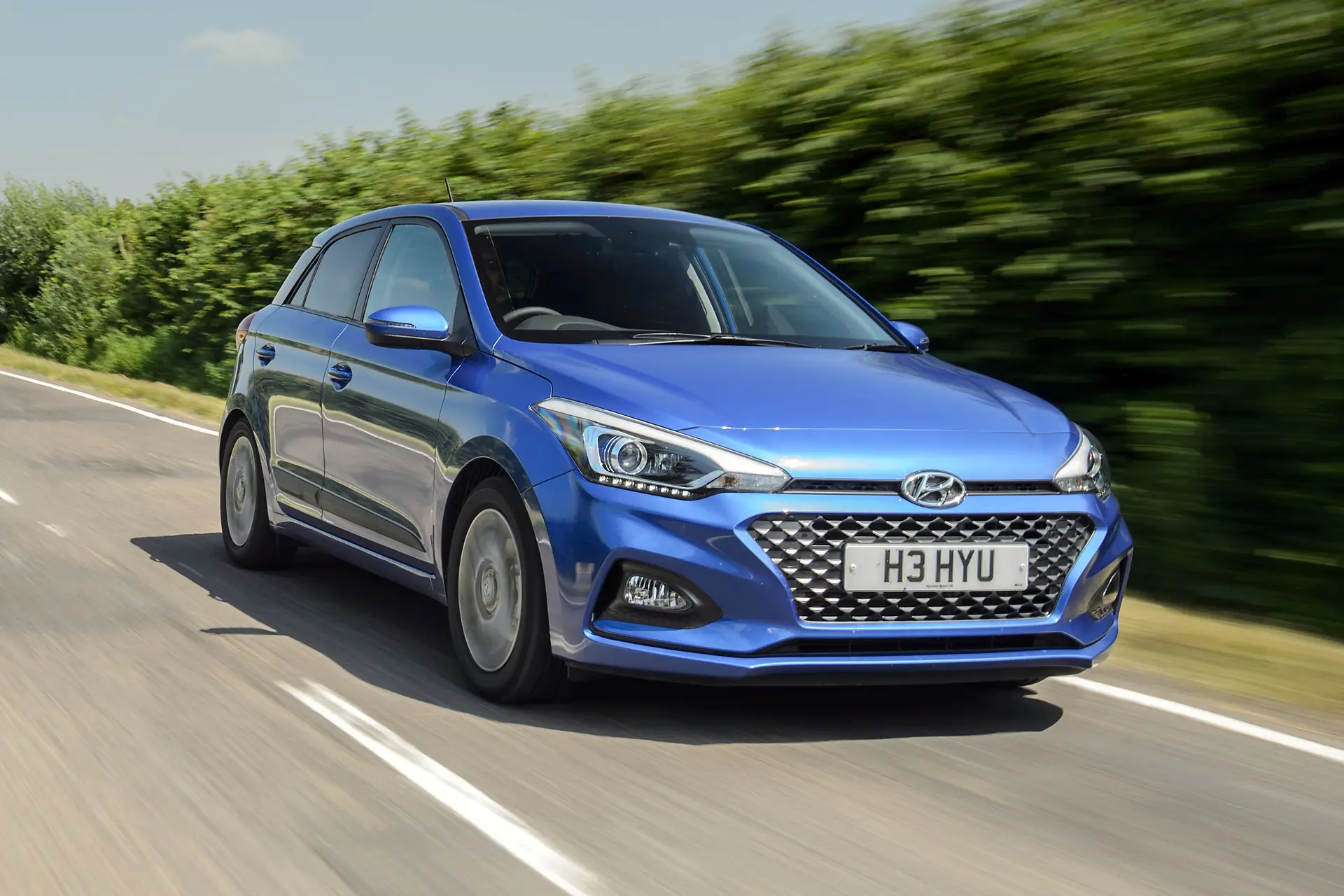
Its steering is slow and numb, which means you're not always sure how much effort to put into turns. Still, it's light enough to make parking manoeuvres easy, and after tweaks in 2018, feels more precise at high speeds.
In the standard car, you get suspension that errs on the side of comfort. The springs are soft enough to make it comfortable sat on the motorway, smoothing out long undulations without making anyone inside feel sick. It has tighter body control than cars such as the Citroen C3, but leans over in corners more than a Ford Fiesta.
However, over sharper-edged imperfections, things come unstuck. Expansion joints send a nasty thump into the cabin, and on scruffier town roads it feels choppier and more fidgety than the best-driving small cars will.
We would stop short of calling it uncomfortable, but you're more aware of poor surfaces than in some rivals.
You might think that choosing the Active model - with its 20mm raised suspension - would help to eliminate some of the i20's low-speed maladies. In fact, this version actually feels stiffer then the standard model, and rolls a bit more than the standard car, so it not only handles worse, but is also less comfortable.
On the plus side, the regular i20 grips well, feeling stable and secure in fast and slower corners. It gives you the confidence to turn-in positively, knowing it'll take you around in a composed and unremarkable way. Sure, it's not the most memorable, but we'd choose a decent bland car over an irritating one every day of the week.
Engines and gearboxes
Hyundai has used a wide variety of engines to power the i20, reflecting the shifting trends in small car buyers and advances in technology made over the course of its life. Initially the petrol line-up was limited to two naturally-aspirated engines: a 1.2 with 75PS or 84PS, plus a 1.4 with 100PS and the option of an automatic.
Compared to turbocharged rivals, these felt slow and old-fashioned, requiring working hard to tackle hills or keep up with faster motorway traffic. They're fine for driving in town though, and reasonably efficient too. In 2016, the brand introduced a three-cylinder turbo with brisk performance, and a higher price - the 1.0 T-GDi.
Available with 100PS or 120PS, this unit is quick enough to maintain easy progress on the motorway without hindering economy. It feels a bit flat at low revs though, and not as zesty as say, Ford's EcoBoost engines. It is our pick if you plan on taking the i20 on regular long trips, but will cost you more to insure than the 1.2-litre.
Although the majority of i20 engines come with a five-speed manual gearbox, the 100PS 1.0-litre petrol is available with a twin-clutch transmission introduced in 2018. It works well, changing gear without jerkiness, but hampers performance. Still, fuel economy is much better than traditional automatic in the old 1.4-litre car.
Now axed, the i20 was previously sold with a choice of 75PS 1.1-litre and 90PS 1.4-litre diesel engines. Of these, the 1.4-litre is probably the best buy thanks to a decent 240Nm of torque, but it was expensive new.
Refinement and noise levels
The i20 never quite manages that clever trick of fooling you into thinking that you're driving a bigger car. It's still a hushed customer by the standards of the class though, especially when you're pottering around town.
Pick one of the four-cylinder petrols and you'll barely hear them at suburban speeds. However, because they both lack grunt, there'll be occasional cause to work them harder, at which point they get intrusive and noisy.
The 1.0-litre turbo feels more muscular, but has a characteristic thrum that works as a constant reminder of its odd number of cylinders. It also sends some noticeable vibration through the controls and your seat base.
Apart from the 120PS 1.0 T-GDi (which has a six-speed manual) all the other engines use a five-speed, and the absence of a cruising gear does mean they feel a bit more strained than some rivals at motorway speed.
Once you are dicing with traffic in the outside lane, you'll hear some road and wind noise. It's enough to raise your voice or twist the volume dial on the stereo, but no more than you'll get from the i20's peers in this class.
The axed diesels were surprisingly refined cruisers - even the three-cylinder 1.1-litre - but neither was as smooth or quiet as the petrols in town, which is arguably where this car will likely spend 80 per cent of its life.
Safety equipment
Based on its crash test performance alone, you might have reason to question the i20's safety record. The car received a four-star rating (out of maximum five) from independent body Euro NCAP way back in 2015.
Although it got adequate scores for protecting adults (85%) and children (73%) on board, the safest small cars do better in both categories. The Volkswagen Polo and Renault Clio for example, achieve 96% and five-stars.
The reason that the date of the test is significant though, is that Hyundai introduced a range of new active safety systems in its 2018 facelift, which should help prevent you from having an accident in the first place.
Called SmartSense, this package includes a lane keeping assistant, an alertness monitor that will warn you to take a coffee break after a long stint behind the wheel, high-beam assist, and auto-emergency braking too.
That last one is the most important. It uses a camera to scan the road for pedestrians and other traffic, warns you if it senses an imminent collision, and reacts quickly even if you don't, hitting the brakes to stop the car.
The entry-level S Connect trim misses out on these advanced features. It's also the only model to come with a foam tyre repair kit instead of a space saver spare wheel, but still has the standard roster of passive gear.
This includes six airbags, ISOFIX child seat mounts, tyre pressure monitors (Premium trims get a posher set showing the driver the air pressure of each individual corner), electronic stability control and hill start assist.
Every model has a reversing camera, handy for backing into tight spaces, but you'll need to step up to either Play or SE trim for acoustic rear sensors, and Premium Nav if you want an audio warning from the front too.
MPG and fuel costs
"The all-new i20 will be the first to feature mild-hybrid fuel saving technology, but this generation goes without. It's certainly not going to guzzle down petrol, but is unlikely to knock your socks off with its efficiency either. "
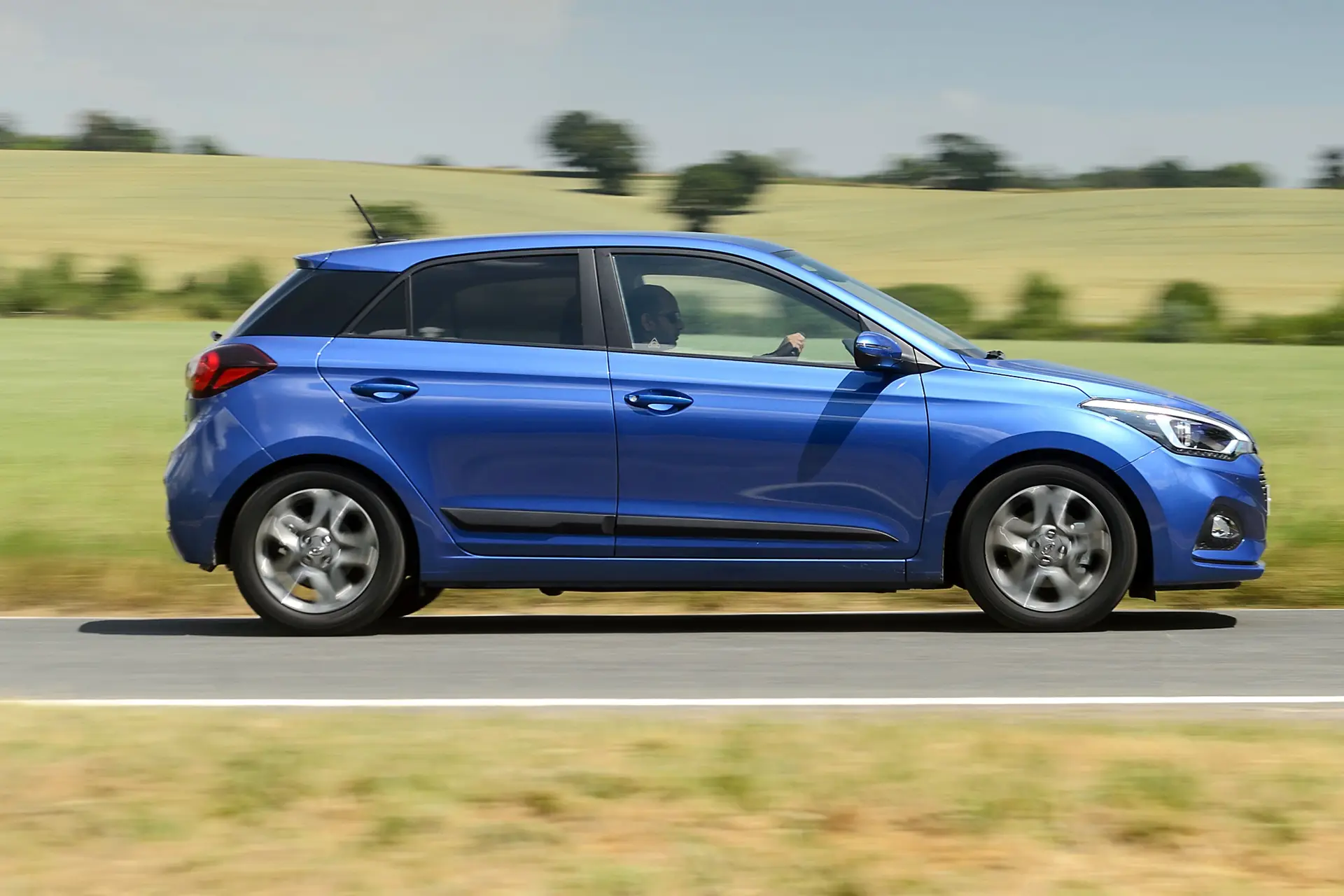
Popular 1.2 petrol versions should return around 48mpg in everyday driving. The 1.0-litre turbo is supposedly more efficient, but our Real MPG owners recorded just 78 percent of the claimed figures in everyday driving.
Choosing the dual-clutch gearbox does mean sacrificing a few precious mpg. Still, it's nowhere near as fuel-sapping as the old 1.4-litre automatic with a torque converter transmission, which returned mid-thirties mpg.
Hyundai did previously offer a 1.1-litre diesel that it claimed was capable of achieving 70mpg. That engine was dangerously slow however, and it was no surprise to see it dropped from the range altogether in 2017.
With a generous 50-litre fuel tank, you should still be able to drive 450 miles between fill-ups in a petrol i20.
Insurance groups and costs
One of the major drawbacks of the i20 is that our favourite engine is also the most expensive to get insured. It's not a small difference either. Where the boggo 1.2 petrol sits down in Group 6, the 1.0 T-GDi is Group 13.
That's going to represent a significant barrier to younger drivers looking to get fully comprehensive coverage, and for those buyers, the most affordable option is the pre-facelift basic S model, which sits down in Group 4.
Most of its rivals offer at least one model that will sneak into Group 2, but the gap between these ratings will only have a major impact on your premiums if you have other risk factors too, for instance previous crashes.
VED car tax
As is the case with many small cars, the i20 won't cost you much to tax. However, you'll only really get the benefit of those cheaper running costs if you own a car registered before the tax rule changes in April 2017.
Almost every version pre-dating that cutoff will cost you no-more than £30 a year (except the 1.4-litre auto), whereas newer cars sold after that date all have to pay the same standard charge, currently £150 per year.
Brand new models are also subject to a first-year tax rate based on their CO2 emissions, but this will be a fairly reasonable £215 for most of the range, and the charge is usually rolled into the dealer purchase price.
How much should you be paying for a used Hyundai i20?
"Navigating the murky waters of the used market for a clean i20 can be a bit tricky. Prices for early cars start from less than £5,000, but you'll want to go over that threshold to avoid diesels with astronomical mileages."
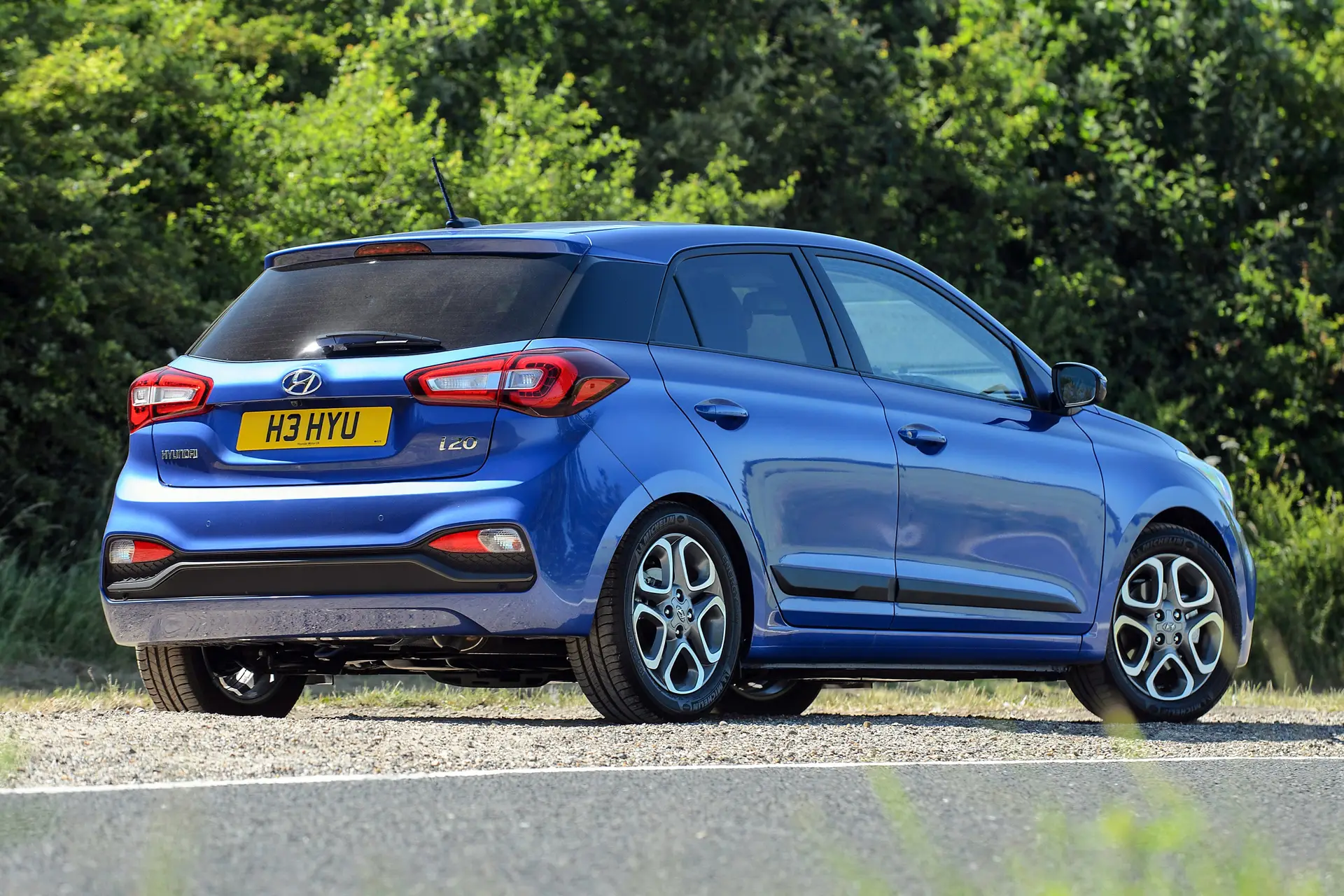
Luckily, you'll only need to up the budget by an extra £700 or so to find a decent 1.2-litre petrol, with below average mileage for the year, and in your choice of trims. Avoid the rather basic 'S' models if you can though.
For our favourite 1.0-litre T-GDi turbo petrol, look to pay between £7,000 and £8,000. That should bag you a 2016 model with a full service book. Prices for the i20 Active crossover kick off a few hundred pounds higher.
The i20 is due to be replaced in 2020, so dealers should be looking to shift stock of the current shape model, so push for a discount if you're buying new, especially on ex-demonstrator examples in the pricier trim levels.
Trim levels and standard equipment
Prior to its 2018 facelift, Hyundai offered the i20 in very basic guises that were more suited to life as unloved rental cars than as someone's personal pride and joy. The cheapest S model was so austere inside in fact, there was even a separate 'S Air' trim level for adding something as rudimentary as manual air-conditioning.
If you're looking at the older model, steer clear of these trims and go for at least an SE. This brings with it alloy wheels, cruise control, four electric windows, rear parking sensors - all the essentials that you'd want.
Hyundai really raised its game when the i20 was refreshed too. Every model now has a 7.0-inch touch screen, featuring both Apple and Android smartphone mirroring as standard, air-con, DAB and Bluetooth.
That's good news, since Hyundai doesn't offer optional extras. The only paid upgrade is for metallic paint.
We would still recommend stepping up to an SE, which adds a leather steering wheel, cruise control, and some important safety gear that'll help prevent low-speed accidents.
As the name suggests, the Premium Nav versions feature an integrated navigation system, while the top spec Premium SE Nav has unexpected goodies like a heated steering wheel, keyless entry, and a sunroof. We don’t think these gadgets are really worth the extra cash though, unless you’re buying a used model.
For new buyers, the special Edition Play model adds some visual sparkle like a two-tone roof, 16-inch alloys, rear parking sensors and automatic headlights, but crucially it's actually cheaper to buy than the SE version.
Ask the heycar experts: common questions
Is the Hyundai i20 a good car?
How many different body styles are there?
What insurance group is the Hyundai i20?
Which is the best model of the Hyundai i20?
Stay up to speed with great offers plus the latest car news and reviews
Keep me updated by email with the latest advice, news and offers from heycar.
By submitting you agree to our privacy policy

